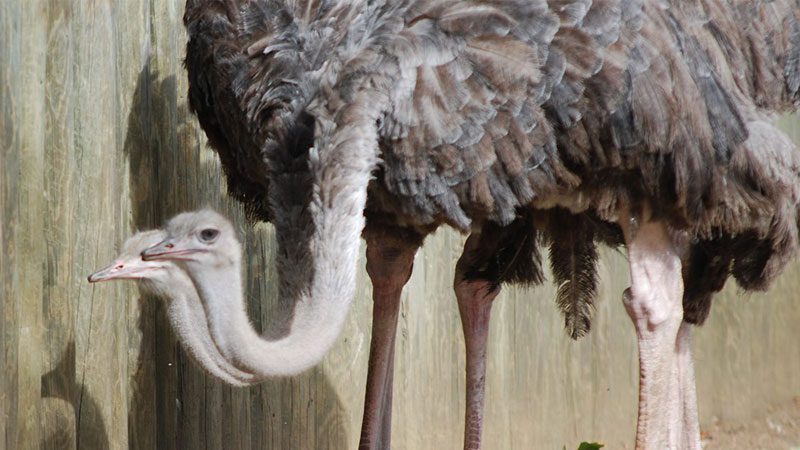Welcome to Lincoln Park Zoo’s new web app! Share your feedback

Ostrich
Camel & Zebra
Did You Know?
- Ostriches are the largest living birds, with males reaching 9 feet tall and 350 pounds.
- They can run at a sustained speed of 30 miles per hour. They can also sprint 45 miles per hour when threatened.
- Males build nests by digging with their bill. This may be why some people think ostriches bury their heads when they’re in danger.
Don’t See the Animals?
Why aren’t animals visible at all times? To promote positive animal welfare, we provide animals with choices. They can choose to spend time in areas that are out of public view.

Take an Animal Home with You
Overview
Scientific Name: Struthio camelus
Class: Birds
Diet: Plants, roots, and seeds (insects, lizards, and other prey)
Range: Sub-Saharan Africa except the forests of the Congo River Basin
Endangered Status: Least Concern
More Information
Ostriches have a flexible neck and two toes on each foot, a trait that no other bird has. Their head and neck look bare, while the rest of their plumage consists of shaggy, flexible feathers. Males have black plumage with white-tipped tails and wings; females are gray-brown.
These birds live alone, in pairs, or in small groups. A breeding group consists of a dominant male and several females. The first female to lay eggs in the nest the male makes is the major hen, and the other female ostriches lay eggs in the same nest. These eggs contain the largest cells in nature. The male and the major hen incubate the eggs, and they hatch after about six weeks. All the adults tend to the checks.
Ostriches were long hunted by humans for feathers and meat and have also experienced habitat loss. Most live in preserves or game parks now, so they are not considered threatened.
